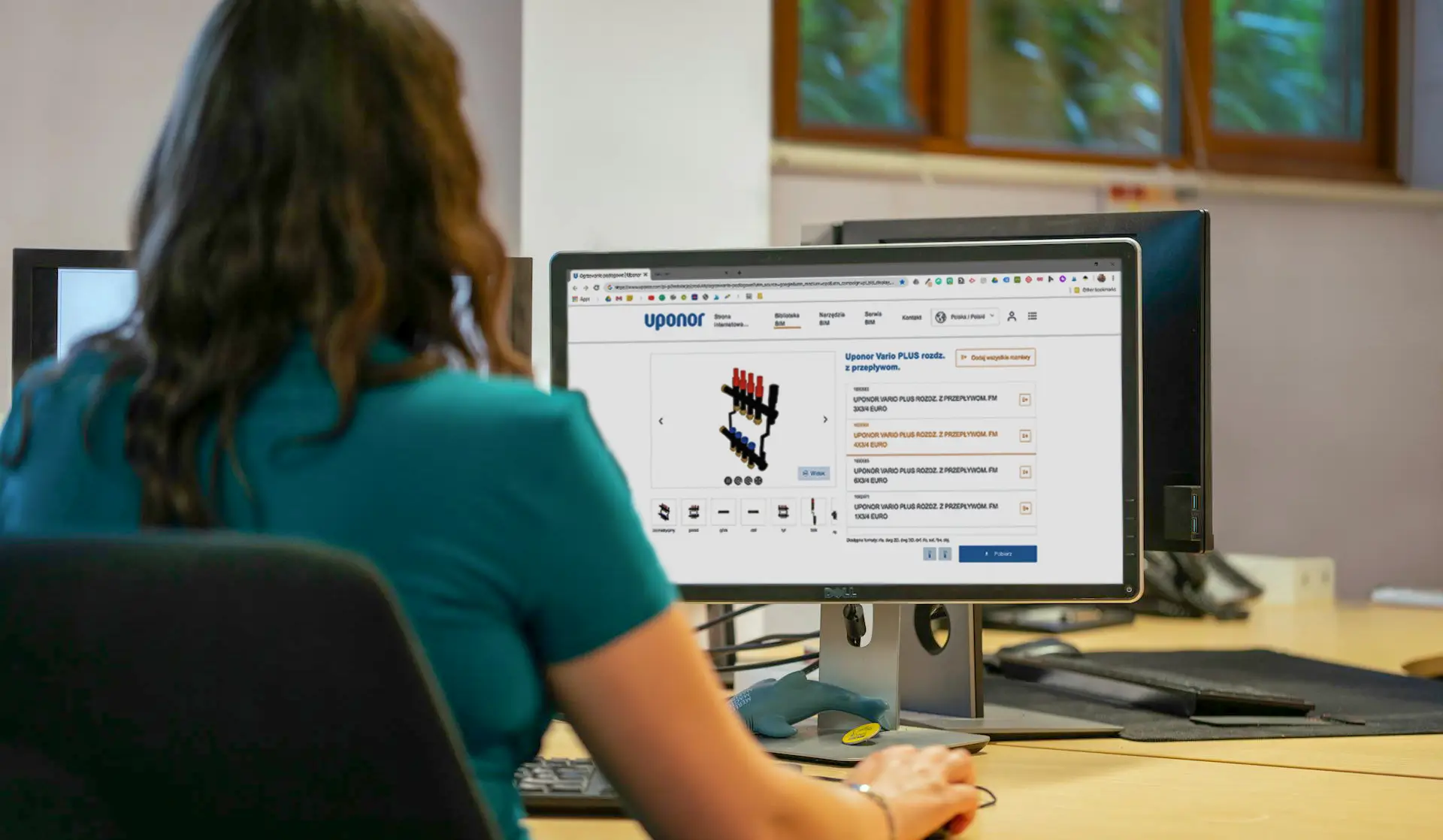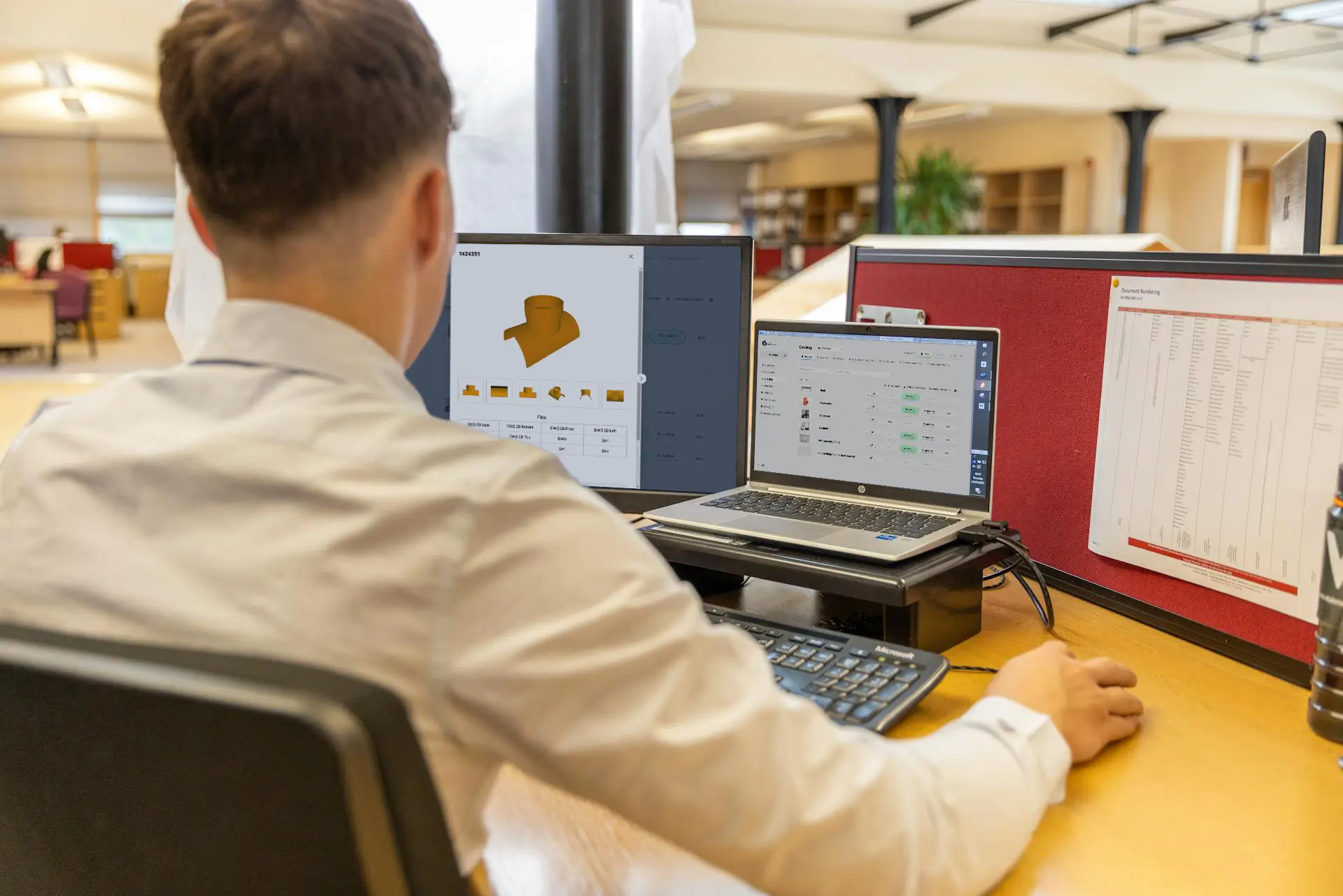From chaos in data to consistency in every channel
Building materials manufacturers — from marketing specialists to BIM managers — face the problem of distributed product information every day. Divergent specifications in printed catalogs, outdated data on websites or differences between data in e‑commerce and mobile applications lead to errors and a decrease in customer confidence.
Back in the 1990s, the only challenge was to prepare printed catalogs for different markets and languages. Today, the situation is much more complex — BIM data libraries have been added to traditional communication channels, which require precise information, such as dimensions, certificates or ETIM classifications. Manually managing thousands of products in so many places is expensive and fraught with a high risk of errors. So how do you achieve data consistency from catalogs to BIM libraries?
PIM — central management of product information
PIM (Product Information Management) systems collect all product data in one place — from basic technical specifications, to descriptions and photos, to EAN codes and certificates. Like ERP or CMS systems, PIM was created to simplify the process of preparing marketing and sales materials for many markets and communication channels.
With PIM, construction manufacturers can:
- ensure consistency of data in catalogues, e‑commerce and marketing materials,
- quickly update information in multiple channels at once,
- improve collaboration between marketing, sales and customer service teams,
- build a “single source of truth” — a single source of truth for product data.
There is also increasing talk of PXM (Product Experience Management), which focuses on personalizing customer experiences, and MDM (Master Data Management), which includes data about suppliers or customers.
PIM and BIM are a combination that organizes product data
In the construction industry, where products must meet numerous technical and certification standards, BIM libraries used by designers and architects are becoming increasingly important. It is in them that detailed models of objects are found - from dimensions and strength parameters to ETIM classification and certificate documentation. The challenge arises when product data is stored in many different places, and updates require manual transfer of information from marketing systems or ERP systems to BIM models. Each change of dimension or certificate involves the need to correct several dozen or several hundred files, often in several language versions. This process is not only time-consuming, but also prone to errors that can result in serious complications in construction projects.
The integration of PIM systems with BIM libraries solves this problem. The data entered once into the central database can be used many times — both for the preparation of catalogs, websites, sales materials, and BIM models. Thanks to this, each update automatically penetrates into all communication channels. Consistency of information becomes possible without additional labor, and manufacturers can be sure that designers always use the latest and verified data.
Manual management of BIM libraries and costs and risk of errors
The traditional approach to creating and maintaining BIM libraries is based on manually entering product information. This solution is particularly problematic when the manufacturer operates in multiple markets and has to adapt its models to local regulatory and language requirements. In practice, this means having to create dozens or hundreds of variants of the same model, and each change in the product entails a wave of updates. It is not difficult in such a situation to have discrepancies between versions, which can lead to loss of confidence of designers and business partners.
The high cost of preparing BIM libraries further exacerbates this problem. Each individual BIM object can cost from several hundred to even several thousand dollars, especially when it is necessary to adapt it to several formats and standards.
“58% of construction companies indicate a lack of qualified personnel as a barrier to BIM, which also applies to data management.” 2022 Dodge Data & Analytics Report
With a portfolio of thousands of products, the costs of updating manually become virtually unbearable. Hence the growing interest of manufacturers in solutions that make it possible to automate this process and at the same time eliminate the risk of errors.
Get automatic PIM BIM integration with BIMStreamer
The answer to these challenges is BIMStreamer — software designed to facilitate the integration of product data between PIM systems and BIM libraries. The platform acts as a bridge that allows you to easily generate BIM objects based on the information stored in the PIM. Updates, which in the traditional approach would require tedious manual data transfer, take place automatically. This is especially important for large product portfolios and companies operating in multiple markets, where each change must be reflected in dozens of language versions and adapted to local standards.
BIMStreamer not only integrates data, but also allows you to generate models compatible with various platforms, including the popular Revit software. The solution supports both manufacturers who already use PIM and those who have not yet implemented this type of system. In the latter case, BIMStreamer allows you to manage product data directly in its administration panel, acting as a simpler PCM (Product Content Management) system. Data can be entered manually or imported from Excel files, giving you a lot of flexibility when deploying.
Are you looking for a company that will help you with the implementation of PIM for BIM technology? Contact us and schedule a free online consultation with our technical expert!
Contact usPractical effects of implementations
Companies that have decided to implement BIMStreamer note a clear improvement in the organization of data and the speed of its updating. An example is Uponor, which thanks to this solution creates and maintains more than one hundred thousand BIM libraries in twenty languages, serving markets with different legal and technical requirements. Aliaxis took advantage of the integration to merge product data from multiple brands, eliminating inconsistencies in BIM catalogs and libraries. Another example is OBO Bettermann, which automated the updating of key technical parameters, such as the ETIM classification, which significantly reduced the time for making changes to the wide cable portfolio.
Such effects show that automation is not just a technical improvement, but a real business support. Reducing the cost of maintaining BIM libraries, bringing products to market faster and improving the confidence of designers are elements that directly affect the competitiveness of construction manufacturers.
Benefits for companies without PIM
It is worth emphasizing that the integration of PIM and BIM is not reserved exclusively for companies with extensive IT facilities. BIMStreamer allows you to start working even when the manufacturer does not yet use the PIM system. In this case, the platform acts as a standalone product content management tool and allows you to enter data flexibly - manually or by importing from files. Thanks to this, it is possible to quickly launch the BIM library, and in the future — seamless integration with the full PIM system if the company decides to implement it.
PIM and BIM — the foundation of modern product communication
The combination of PIM and BIM systems is becoming a key element of the digital transformation of construction manufacturers today. With this approach, it is possible to maintain complete data consistency across all communication channels, from print catalogs and e‑commerce, to mobile applications, to BIM libraries used by designers. Solutions like BIMStreamer allow you to eliminate the chaos of manual updates, speed up the process of bringing products to market and significantly reduce the cost of creating models.
Companies that already use this type of tools gain a competitive advantage because they provide designers with always up-to-date and precise data. This, in turn, translates into greater visibility of products in design processes and a higher tendency of architects to recommend them in investments.





